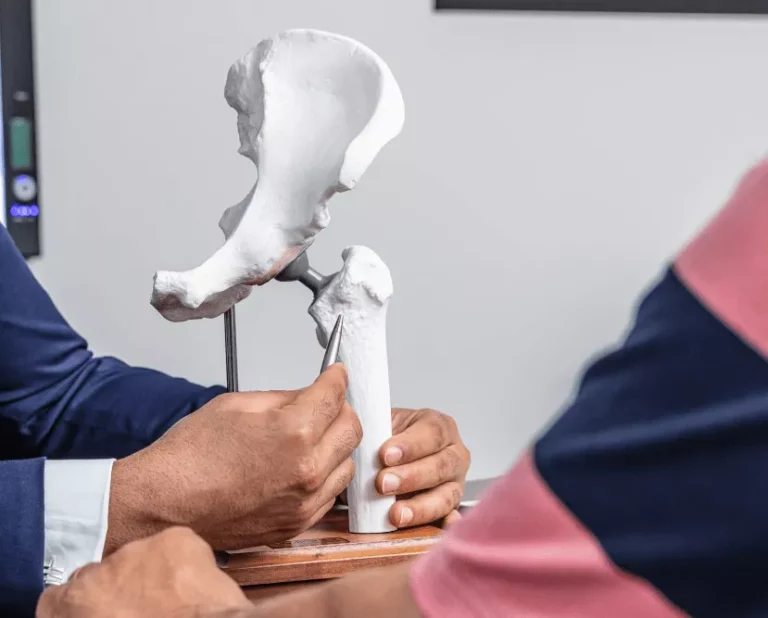Direct Anterior Approach to Total Hip Replacement (THR)
How is Total Hip Replacement surgery performed?
There are a number of surgical approaches used to expose the hip joint during total hip replacement surgery. The posterior approach is commonly used, but another approach is the anterolateral approach.
The anterior approach to the hip is not new, but improvements in instrumentation have allowed easy access to the hip joint through this approach to perform total hip replacement surgery without dividing any muscles and without the use of potentially traumatic traction tables.
How is the direct anterior approach performed and what are the benefits?
The anterior approach uses an interval between the muscles in front of the hip joint (Tensor Fascia lata and Sartorius, Rectus femoris and Gluteus Medius) to expose the hip joint which is then dislocated to perform the preparation for the total hip replacement.
The benefit of the anterior approach is that it does not split any of the muscles, as the posterior approach does with the gluteus maximus; and it does not detach any of the muscles from their bony attachment to the bone, as the posterior approach does with the short external rotator muscles, and the anterolateral approach does with the large important abductor muscles (Gluteus medius and minimus).
Thus, the direct anterior approach allows for easier early recovery, especially in the first six weeks after surgery, as there is less muscle pain and better early mobility and ambulation. Preserving the posterior hip capsule and the short external rotator attachment improves hip stability compared to the posterior approach. Preservation of the abductors results in much less limping compared to total hip replacement performed through the anterolateral approach.
Book an Appointment Today!

How has total hip replacement surgery advanced?
The early techniques of total hip replacement through the anterior approach used large traction attachments to place tension on the operated leg.
This is associated with traction related complications such as bone fractures and nerve injuries, especially around the groin, the sciatic nerve and the common peroneal nerve.
The use of the traction device also limited surgeons to particular device companies that manufactured the traction device.
With surgical and technological advancements, the on table direct anterior approach does not use a traction device, it achieves the same exposure with the help of modified retractors and instruments that are manufactured by many different companies; allowing the surgeon to use whatever prosthesis they are most comfortable and familiar with. This now also allows the use of many of the traditional prosthesis that have excellent survival and proven clinical record.
What are possible complications related to the anterior approach of THR?
A particular possible complication of the anterior approach is potential injury to the lateral femoral cutaneous nerve of the thigh which may result in numbness and tingling in the lateral (outer) aspect of the thigh.
While the direct anterior approach has many benefits, the posterior approach remains the workhorse of total hip replacement surgery in many patients. Factors such as central obesity, revision hip surgery and some hip pathologies may not be amenable to total hip replacement through the anterior approach. Therefore, each patient’s case should be assessed individually and the risks and benefits of total hip replacement through either approach will be discussed between Dr Khatib and the patient to formulate the most suitable management plan for each individual patient.
